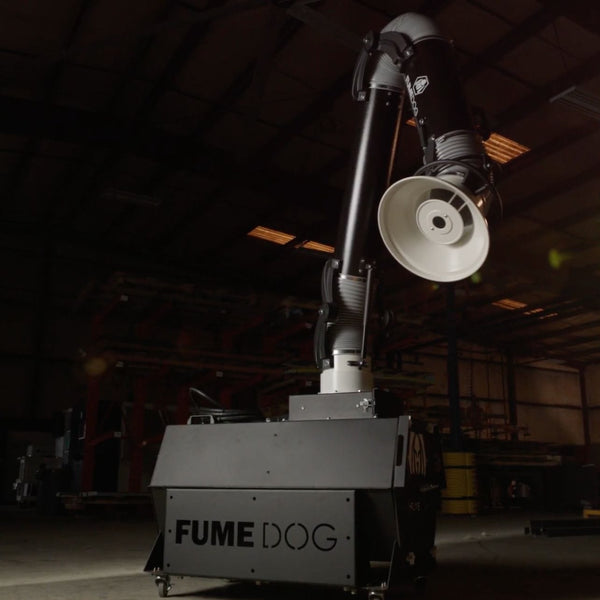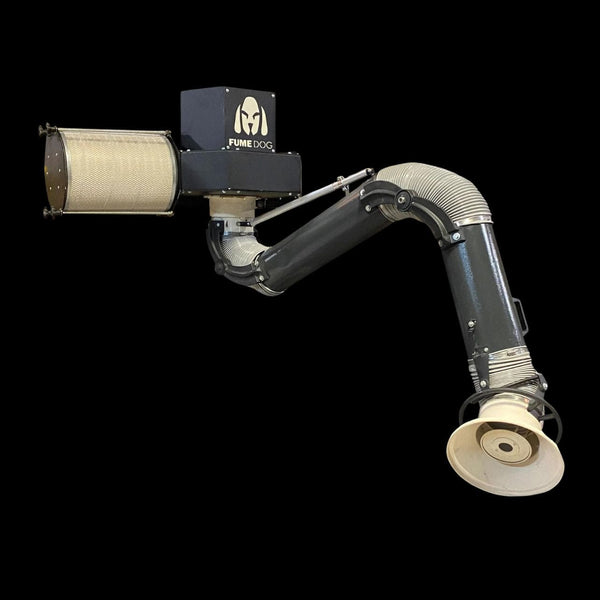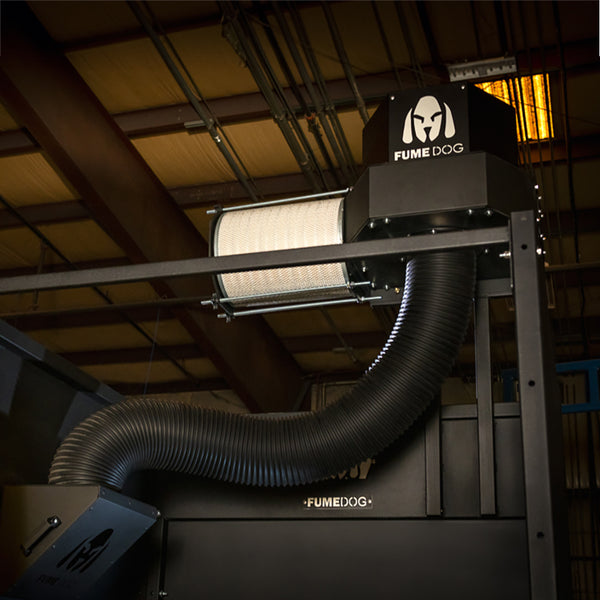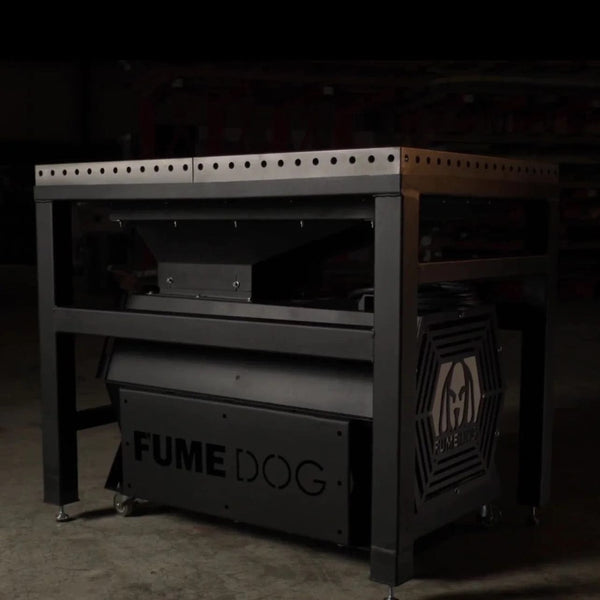
When it comes to protecting yourself from welding fumes, you've got two main options: fume extraction systems that capture harmful fumes at the source, or respiratory protection that filters the air you breathe. Both methods have their place in welding safety, but understanding when and how to use each one can make the difference between clean air and a lifetime of breathing problems.
Let's break down the real differences between these protection methods so you can make the smart choice for your welding applications.
Key Takeaways
• Fume extraction systems provide source capture protection by removing harmful fumes before they can enter your breathing zone, offering superior overall protection for stationary welding operations.
• Respiratory protection serves as essential personal defense in situations where fume extraction isn't practical, such as confined spaces, field welding, or as backup protection in high-exposure environments.
• The most effective safety approach combines both methods – using fume extraction as primary protection while maintaining respiratory protection as a redundant safety system for maximum protection.
• Proper fit, maintenance, and application-specific selection are critical for both protection methods to ensure they provide the safety levels you're counting on.
Protect Your Health with Professional Fume Extraction
Don't gamble with your respiratory health when professional-grade protection is within reach. Fume Dog's fume extraction systems provide the source capture protection that keeps harmful fumes out of your breathing zone from day one. Whether you need portable flexibility or stationary power, we've got the solution that fits your welding operation and your budget.
Understanding Welding Fumes and Why Protection Matters

What Are Welding Fumes and Airborne Contaminants?
Welding fumes are a complex mixture of airborne particles created when metals are heated to their melting point. These microscopic particles contain everything from iron oxide to more dangerous substances like chromium, nickel, and manganese. The problem? These airborne contaminants don't just disappear – they hang around in your workspace, waiting to be inhaled.
The composition of welding fumes varies depending on the base metals, filler materials, and coatings involved. What MIG welding involves, for example, creates different fume characteristics compared to TIG welding applications. Regardless of the process, all welding creates some level of fume exposure that requires proper protection.
Health Risks in the Welder's Breathing Zone
Your welder's breathing zone – the area within 10 inches of your welding helmet – is where fume concentration hits its peak. This is ground zero for exposure to harmful fumes that can cause both immediate and long-term health issues.
Short-term exposure can lead to symptoms like throat irritation, dizziness, and nausea. But the real concern is long-term exposure, which can result in serious respiratory conditions and even metal fume fever. The welder wearing inadequate protection faces risks that compound over years of exposure.
Fume Extraction Systems: Capturing Harmful Fumes at the Source

How Fume Extractors Work to Capture Fumes
A fume extractor works by creating negative pressure to pull welding fumes away from your work area before they can enter your breathing space. These systems use powerful fans and filtration to capture fumes right at the source, preventing them from dispersing throughout your workspace.
The beauty of fume extraction lies in its proactive approach – instead of filtering air after you've already breathed it, these systems prevent contaminated air from reaching you in the first place. This source capture method is widely considered the most effective form of protection against welding fumes.
Portable Units vs Fixed Fume Extraction Systems
Portable fume extractors offer flexibility for welders who move between different workstations or job sites. These units can be wheeled into position wherever you're working, making them perfect for shops that handle varied projects or field work applications.
Fixed systems, on the other hand, provide consistent protection for dedicated welding stations. While they lack portability, they often offer higher airflow rates and can be integrated into larger ventilation systems for comprehensive workspace protection.
Benefits of Filtered Air Technology
Modern fume extraction systems don't just move air – they clean it. Advanced filtration technology removes particles as small as 0.3 microns, ensuring that the filtered air being returned to your workspace is cleaner than what many people breathe outdoors.
This filtered air approach means you're not just protecting yourself, but also improving air quality for everyone in the surrounding area. It's a win-win that creates a healthier work environment while maintaining productivity.
Respiratory Protection: Personal Defense Against Airborne Particles

Types of Respirators for Welding Applications
Respiratory protection comes in several forms, each designed for different levels of exposure and working conditions. The most basic option is a disposable N95-style mask, which provides minimal protection against larger particles but falls short for serious welding applications.
For welding work, you'll typically need either a half-face or full-face respirator with appropriate filters. A welding mask that incorporates respiratory protection can provide both eye protection and breathing protection in one unit, though this combination approach has limitations in high-exposure situations.
Disposable Respirators vs Powered Air Systems
Disposable respirators are the entry-level option for respiratory protection. While they're better than nothing, they rely entirely on your lung power to pull air through the filter, which becomes increasingly difficult as the filter loads with particles.
Powered air purifying respirators (PAPR) use a battery-powered blower to push filtered air to your respirator mask or welding helmet. This powered air system reduces breathing resistance and can provide higher protection factors, but comes with added complexity and maintenance requirements.
Fit Testing and Regular Maintenance Requirements
Any respirator is only as good as its fit and condition. Fit testing ensures that your respirator creates a proper seal against your face – a critical requirement that many welders overlook. Without proper fit, contaminated air can leak around the edges, defeating the purpose of wearing protection.
Regular maintenance goes beyond just replacing filters. Respirator components need cleaning, inspection, and eventual replacement. The appropriate respirator for your application today might not be appropriate tomorrow if it's not properly maintained.
Fume Extractor vs Respirator: Key Differences and Applications

Protection Levels and Effectiveness
When comparing protection levels, fume extraction systems typically provide superior overall protection because they address the source of the problem. By removing fumes before they can disperse, these systems protect not just the welder but everyone in the surrounding area.
Respirators provide personal protection but only for the person wearing them. They also require perfect fit and proper maintenance to be effective. In high-concentration environments, even the best respirator can be overwhelmed, while a properly sized fume extractor continues to provide consistent protection.
Best Applications for Each Method
Fume extraction shines in stationary welding operations where you can position the capture hood close to the welding arc. It's particularly effective for production welding, where consistent positioning allows for optimal fume capture. Welding fume extraction systems work best when you can control the work environment and position the extraction point strategically.
Respiratory protection becomes essential in situations where fume extraction isn't practical – think confined spaces, field welding, or situations where positioning a fume extractor isn't feasible. It's also crucial as backup protection even when using fume extraction, providing that extra layer of safety.
Considerations for Confined Spaces
Confined spaces present unique challenges that often require both protection methods. In these environments, fume concentrations can build up quickly, and ventilation is limited. A respirator becomes absolutely critical, but should be combined with portable ventilation when possible.
The combination approach is often the safest bet in confined spaces – use extraction to remove as many fumes as possible, then rely on respiratory protection to handle what remains. This layered approach provides redundancy that could save your life in challenging environments.
Choosing the Right Protection for Your Welding Applications
When to Use Fume Extraction
Choose fume extraction when you're doing stationary welding work where you can position the capture hood within 6-12 inches of the welding arc. It's your best option for production welding, training environments, or any situation where multiple people work in the same area.
Fume extraction is also the smart choice when you want to protect your investment in equipment and facility. Clean air means less contamination on surfaces, reduced cleaning costs, and a more professional work environment that clients and employees appreciate.
When Respiratory Protection Is Essential
Respiratory protection is non-negotiable in confined spaces, during overhead welding, or when working in areas where fume extraction isn't practical. It's also essential as backup protection even when using fume extraction – because redundancy in safety systems is never a bad idea.
Consider respiratory protection mandatory when exposure levels exceed what fume extraction alone can handle, or when regulations specifically require it for your application. Some jobs simply demand that extra layer of personal protection.
Combining Both Methods for Maximum Safety
The most effective approach often combines both methods. Use fume extraction as your primary defense to capture the majority of fumes at the source, then add respiratory protection as your backup system. This layered approach provides the highest level of protection and peace of mind.
Smart welders understand that protection isn't about choosing one method over another – it's about creating a comprehensive safety system that addresses all potential exposure routes. When your health is on the line, redundancy isn't overkill, it's common sense.
Frequently Asked Questions
What's the difference between a welding helmet and respirator protection?
A welding helmet primarily protects your eyes and face from arc flash and spatter, while respirator protection specifically filters the air you breathe to remove harmful particles and fumes from your respiratory system.
How often do portable units require regular maintenance?
Portable fume extraction units typically need filter changes every 3-6 months depending on usage, plus regular inspection of hoses, fans, and electrical components to ensure optimal performance and safety.
Can I rely on just filtered air without additional protection?
While filtered air from fume extraction systems provides excellent protection, adding respiratory protection creates a redundant safety system that's recommended for high-exposure situations or when regulations require it.
What fit testing requirements apply to welding respirators?
OSHA requires annual fit testing for tight-fitting respirators to ensure proper seal and protection, plus additional testing when changing respirator models or if physical changes affect fit.
How do I protect against exposure in confined spaces?
Confined spaces require both atmospheric monitoring and respiratory protection as primary defenses, with portable ventilation systems used when feasible to reduce overall contamination levels.
Which provides better protection against airborne contaminants?
Fume extraction systems typically provide superior overall protection by preventing airborne contaminants from entering the breathing zone, while respirators serve as essential personal protection when extraction isn't sufficient.
